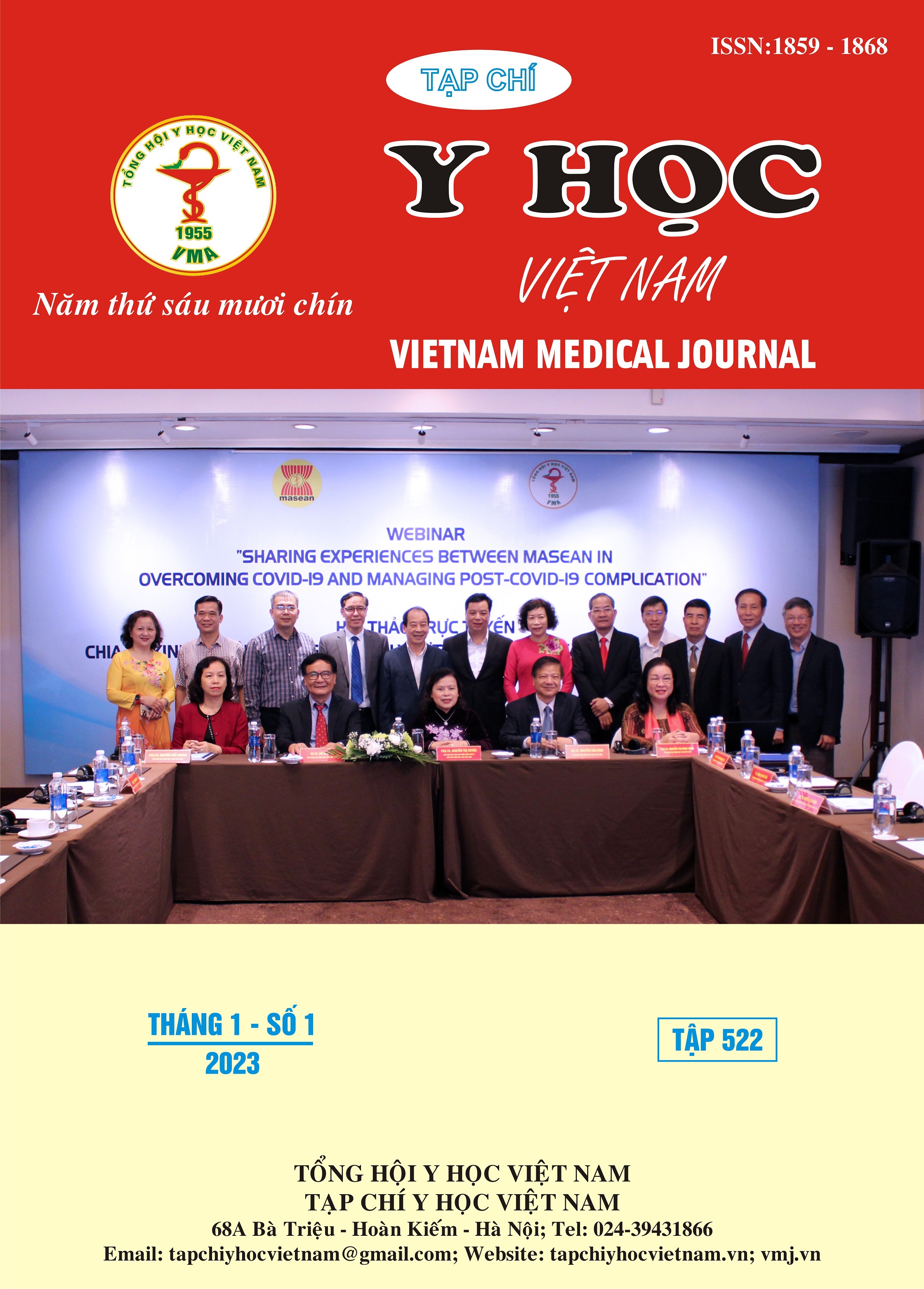ANALYSIS OF THE CURRENT STATUS OF IMIPENEM INDICATIONS IN THE TREATMENT OF BACTERIAL INFECTIONS AT THE NATIONAL HOSPITAL OF OBSTETRICS AND GYNECOLOGY IN 2020
Main Article Content
Abstract
Background and Objectives: Imipenem is a reserve antibiotic that needs to be strictly managed during use. In fact, the National Hospital of Obstetrics and Gynecology has gradually used imipenem over the past few years, as evidenced by the increase in the DDD/100 bed-days indicator by more than 9 times during the period 2014 - 2019. It shows the need to analyze the current status of imipenem antibiotic indications on patients to identify remaining issues in imipenem indications in this hospital in 2020. Study population and methods: A retrospective chart review of 184 medical records of patients over 18 years old who were assigned to receive imipenem between January 1, 2020 and December 31, 2020. Results: The number of medical records with the diagnosis of bacterial infections was 130. The common diagnoses were adnexitis, endometritis, and surgical wound infection of the abdominal wall. 100% of the medical records did not record the level of bacterial infections. The percentage of patients with bacterial culture testing was 71%. Gram-negative bacteria still retain nearly 100% susceptibility to carbapenems and piperacillin/tazobactam antibiotics, but have a relatively high rate of resistance to ampicillin/sulbactam and cephalosporins. The proportion of patients using imipenem in initial empirical therapy, alternative empirical therapy, and targeted therapy was 31.5%, 67.4%, and 1.1%, respectively. The imipenem monotherapy accounted for 16% of the regimens. The most frequent combination antibiotics with imipenem were levofloxacin and metronidazole (73.7% and 43.2%, respectively). Conclusion: There remain a few issues in the indications for imipenem at the National Hospital of Obstetrics and Gynecology: 1. The diagnosis and the level of bacterial infections have not been fully recorded in medical records for which antibiotics are indicated; 2. Patients receive imipenem mainly empirically.
Article Details
Keywords
imipenem, National Hospital of Obstetrics and Gynecology
References
2. Bộ Y tế (2017), "Hướng dẫn thực hành kỹ thuật xét nghiệm vi sinh lâm sàng", pp. 218.
3. Bộ Y tế (2016), "Hướng dẫn thực hiện quản lý sử dụng kháng sinh trong bệnh viện", pp.
4. Nguyễn Thị Thanh Hương và cộng sự (2020), "Phân tích danh mục thuốc kháng sinh sử dụng tại bệnh viện Phụ sản TW năm 2019", Tạp chí Y Dược học, (9/2020), pp. 113-17.
5. Trần Thị Thu Trang (2017), Khảo sát thực trạng sử dụng carbapenem tại bệnh viện đa khoa tỉnh Phú Thọ, Khóa luận tốt nghiệp dược sĩ, Đại học Dược Hà Nội.
6. Phạm Hồng Vân (2020), Phân tích tình hình sử dụng kháng sinh nhóm carbapenem tại bệnh viện Phụ sản Thanh Hóa, Luận văn dược sĩ chuyên khoa cấp I, Đại học Dược Hà Nội.
7. Salmanov Aidyn G, Vitiuk Alla D, et al. (2020), "Prevalence of postpartum endometritis and antimicrobial resistance of responsible pathogens in Ukraine: results a multicenter study (2015–2017)", Wiad Lek, 73(6), pp. 1177-1183.
8. Sarwar Ammar, Butt Mobasher A, et al. (2020), "Rapid emergence of antibacterial resistance by bacterial isolates from patients of gynecological infections in Punjab, Pakistan", Journal of Infection and Public Health, 13(12), pp. 1972-1980.


